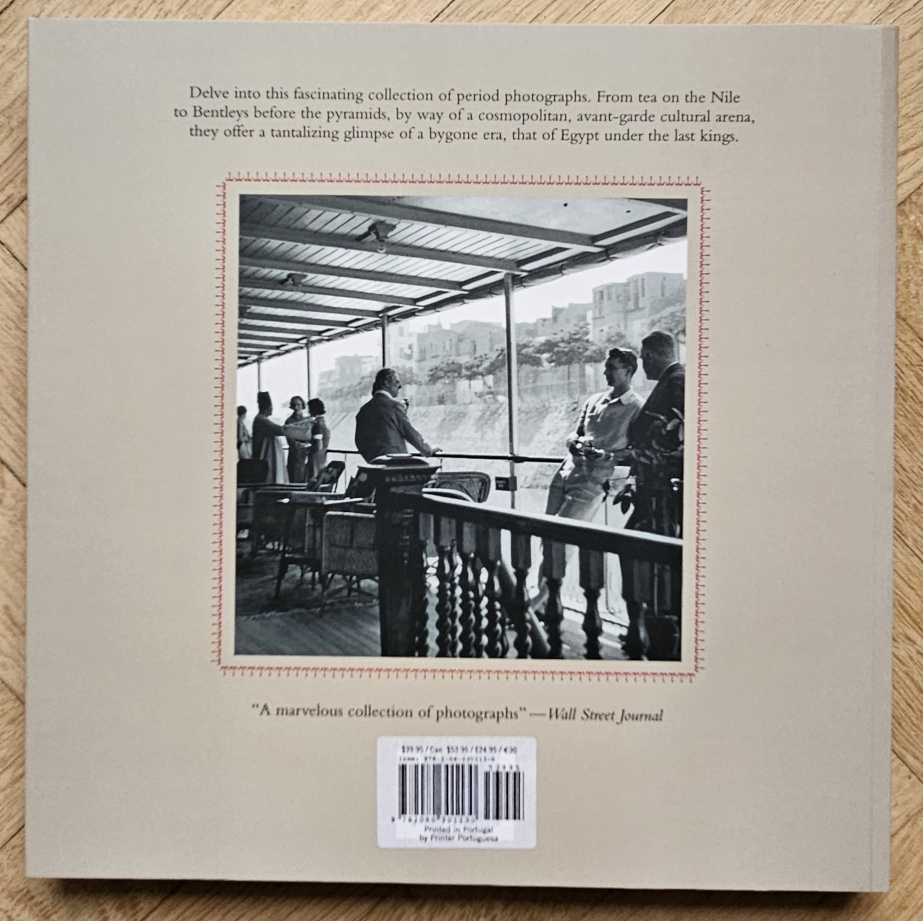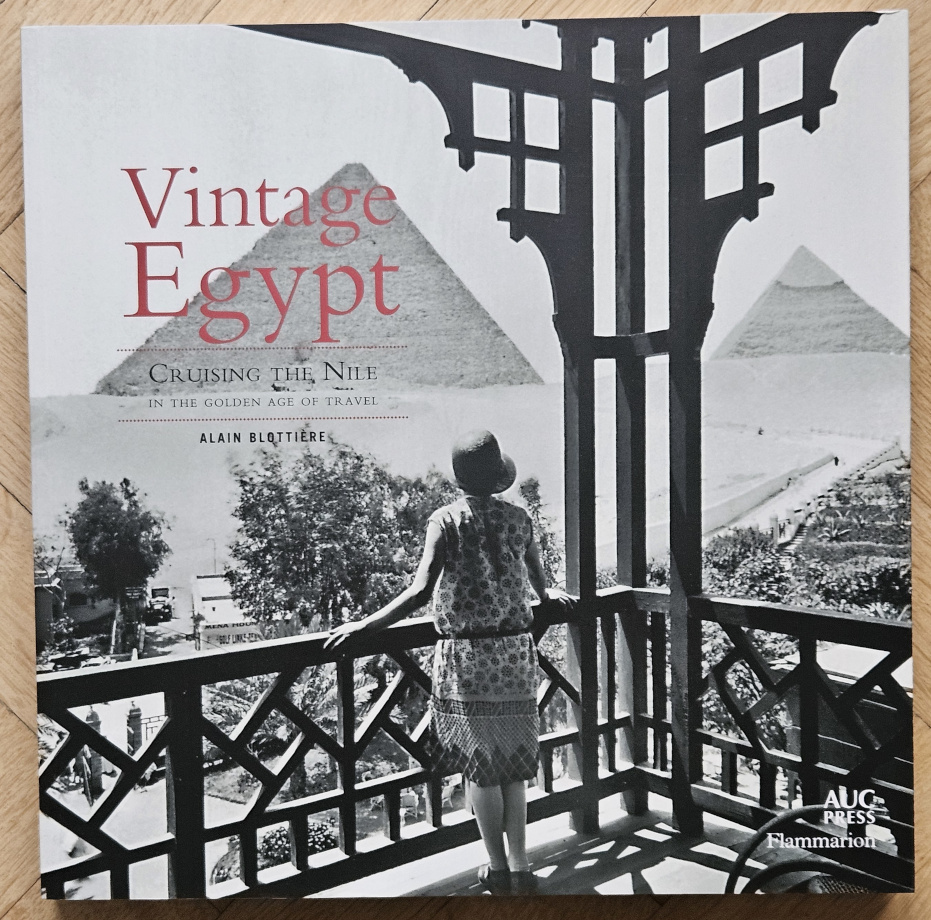Alain Blottiere wrote a wonderful book about tourism in Egypt in the years between 1870 and 1935. It is fittingly called “Vintage Egypt, Cruising the Nile in the Golden Age of Travel”. Buying it, the thought of the Agatha Christy thriller “Death on the Nile” came to my mind almost immediately. Not in the sense of reading stories about murders, but of the very luxurious ships that play a central role in both movie adaptions of the book. What was surprising is how constant and schematic travelling to Egypt was undertaken 150 years ago and today. Egypt was and is a magnet for foreign travellers.
There is one movie adaption of the Agatha Christie thriller from 1978 and another from 2022. The ship seen in the 1978 version, the SS Sudan, is one of the original ships from the 1920s, built by the Thomas Cook company of Great Britain, that made Nile cruises popular. Today this ship, renovated again and again, is the most expensive and most luxurious ship one can book for a cruise, making much younger ships far less attractive in comparison.
By 1921, when the Thomas Cook Company launched the SS Sudan, they were since over 50 years successful in bringing organized tourist groups (called “Cookies”) to Egypt. The 1860s were a time when well-off people generally stayed in their own countries to take a vacation break, the coastal lines with newly built resorts being the most popular destinations in Europe. Apart from that, there were the health resorts with healing waters from springs in the area. But the Northern-Europeans wanted to see the sun, and that had been a driving factor of tourism from the beginning.
More and more travellers found their way to Italy, Greece and the South of France. It was still only a certain group of the population that could afford to travel at all and had the time for it. It seems in Great Britain were the tourists more adventurous, travelling further afield in larger numbers than the other European nations. Agatha Christie did her fair share of travelling to the Middle East – her books featuring Mesopotamia and the Orient Express are a legacy to it.
This thrive for adventure of English tourists might have to do with being a global Empire at the time, where more people had connections to far away nations than in almost any other country. Great Britain was very acutely interested in keeping the Suez Channel open for ships – their influence in Egyptian politics cannot be underestimated, even before the country was made a protectorate in 1882.
Egypt stays an exotic and unruly country to this day, very different in culture and history to Europe. To make tours to that country popular in the 19th century shows the entrepreneurial skill of Thomas Cook. When the tombs of Tutankhamun were discovered in the 1920ies, the flow of British tourists to Egypt was long since established.
The tourists followed a clearly marked route as Alain Blottiere describes, and not without reason. Egypt had many people unhappy with British rule and there were also internal conflicts. Whilst terror against tourist is a phenomenon starting in the late 20th century, certain care was always necessary to avoid problems.
The “Cookies”, all wealthy people, arrived per ship in Alexandria, did not stay there for long but went to Cairo by train and sleeping there for the first time in weeks in a comfortable bed according to Western standards. To Cairo one went to see the pyramids and probably the Egyptian museum, but not much else of the city. This was the same back than and today. The currently most famous hotel with the perfect location in walking distance of the pyramids, the Mena House, started more basic during those times and was not among the finest houses yet.
What has not changed at all is the industry of picture taking at the pyramids, the tourists often sitting on camels. A lot of the travellers quoted in Alain Blottiere’s book complain about the souvenir sellers, again, same as today. What was possible back then, but not today is to climb the pyramids. One must keep in mind the attire of the tourists in the 19th century – elaborate dresses for women and three-piece suits for men. The climbing was more a lift and push exercise by the Egyptian workers. Strange to think this was allowed when etiquette back then was very strict normally. There are some hints on early sex tourism as well in “Vintage Egypt”. Let us guess that this is also one for the “not much has changed” box.
The Nile cruises started in Cairo in the 19th century and followed the river till Aswan. In later years some of the trip was done in plane, as it is today. Most modern tourists do not touch Cairo due to security reasons and travel only between Luxor and Aswan. Which trip to Egypt can be complete without seeing the pyramids? Today tourists often finish their Nile cruise with a week in a beach resort in Hurghada.

The Thomas Cook company had various kind of ships available for their customers. The SS Sudan started her journey as a “tourist ship”, as one disgruntled traveller wrote. As you can see in the picture above, for today’s eyes what was simple then looks quite smart today. The appr. 50 to 60 passengers had to follow a strict schedule and no exceptions could be made. It is the same today, getting up early is typical for a Nile cruise, as all ships have a tight schedule and there is only limited availability at the moorings. Those who wanted to travel more comfortable, and were ready to spend more money, could rent a Dahabeah for only 11 passengers and follow an individual schedule. Today the same option exists. Those two kinds of ships were for Europeans only, Egyptians only allowed as servants. Luckily this has changed.
Overall, reading though the book, thinking of the movies and contemplating own experiences, the “not much has changed” was the most surprising thought coming up. Egypt has rarely been a country for the individual traveller, but it was one of the first countries travellers went to in larger groups. To understand its potential so early, and establishing a route that works to this day, is an impressive achievement by the Thomas Cook company, which dissolved in 2019.
It is quite fascinating that one country resists the continuous change that is all around us and promoted relentlessly. Ancient Egypt was fascinating 3000 years ago, 150 years ago and it is fascinating today. To this day it defies time. This is a somehow comforting and cool thought. If you go there and make your cruise, you are following a tradition of over 150 years and move in the footsteps of celebrities and adventurers. To read Alain Blottiere’s book is more real and topical than most other travel books. In some respect you can even use it as a modern tourist’s guide.
All rights to the book belong to:
Blottiere, Alain, 2003: Vintage Egypt, Cruising the Nile in Golden Age of Travel, first published by Flammarion as “Un voyage en Egypte au temps des derniers rois”, printed in Portugal, ISBN: 978-2-08-030113-0 und ISBN: 978-977-416.898-7 by American University Press
For Agatha Christie’s book “Death on the Nile” and the two movie adaptions from 1978 and 2022 check out amazon or google.

